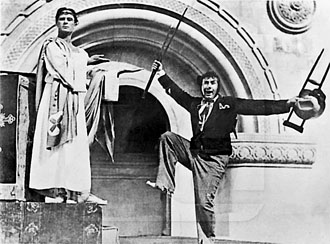WHAT KIND OF PHYSICAL THERAPY DO WE NEED?
- Andrew Ivanchenko M.D.

- Sep 9, 2025
- 3 min read
Updated: Sep 16, 2025

"Why don't you use ultrasound and electrical stimulation?" -- a patient has asked me. "I used to get this treatment at a spa, and it helped me a lot!" It's a typical question. Indeed, why ignore these nice-looking and (occasionally) useful machines? Before answering, let's ask a couple of other questions.
How often does this therapy help? How safe is it?
Alternatives to traditional physical therapy.
Various methods of physical treatment were integrated into a single scientific and clinical discipline at the First Congress of Physical Therapy in Liege, Belgium, in 1905. |
I started my professional career as a doctor in a well-equipped office providing services to the military. Many of our patients suffered pain in their spines and limbs. Following standard medical practices, I often treated them with ultrasound, diadynamic currents, infrared radiation, and similar modalities.
The outcome never impressed me, though, so I started using acupuncture, which considerably increased the number of recoveries and attracted throngs of new patients. Unfortunately, while this new therapy helped some dramatically, it had little effect on others, despite all the Chinese and reflex therapy theories. At a later point, I was introduced to manual therapy. It was fascinating. A patient with a major herniation of the sciatic nerve would barely crawl into the office.
The doctor would give him a vigorous, brief shake, turn his pelvis slightly, make his spine "pop" - and the sufferer, his back now straight, would leave the office almost dancing! Well, this therapy also turned out to have its limitations that we shall discuss later. But why is our rehabilitation center wary of "miraculous" medical technologies?
“Advanced therapies” often cause spikes in blood pressure, headaches and nausea. |
While some people occasionally praise high-tech devices, many more find them pretty useless. Even worse, these "advanced therapies" may cause spikes in blood pressure, headaches, nausea, and weakness. As you know, the cornerstone principle of medicine is "Not harm." For this reason alone, I prefer to avoid using electric power in my practice. Moreover, these fancy methods appear to be far less effective than manual therapy. Why is that?

The vicious circle of compression
Pain almost always stems from a spasm, herniation, or compression, be it the compression of blood vessels by a spasmed muscle, the herniation of a nerve root by a protruding disk, or the pinching of ligaments and menisci by joint surfaces. When this happens, compression elicits pain, spasms, and edema, all of which act to enhance the compression. What a vicious circle! We can try breaking it by dealing with the edema, inflammation, or blood circulation. Isn't it more logical to eliminate compression itself, like opening the door that caught your finger, for an almost instant relief?
Pain stems from compression, so eliminating compression can almost instantly relieve the pain. |
This is the general principle of manual therapy, whose methods are as efficient as they are impressive. Unfortunately, some doctors pursue instantaneous relief at the price of efficiency and even safety, when a therapist (often encouraged by the patient) believes that a dislocated joint or a herniated disk must be fixed fast at all costs. Instead of decompression, such hasty treatment may inflict additional microscopic damage, so the initial recovery would be followed by chronic inflammation and instability of the joint.
It is therefore critical to find a manual therapist who would shun rigid manipulations, crude stretching, and joint popping. In a good axial decompression exercise, the force applied should precisely match that of the spasmed muscles, bringing the joint to the verge of self-resetting. A course of these gentle procedures leads to a long-term recovery rather than a temporary relief.
When combined with patient-specific exercises that strengthen the skeletal muscles, this treatment gives exactly the result we expect from perfect physical therapy.
.png)







Comments